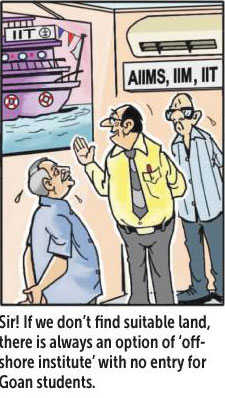Soter D’Souza
In a day or two, Goa will be observing the International Day against Drug Abuse and Illicit Drug Trafficking in Goa. The 2024 theme chosen by the United Nations Office on Drugs and Crime is: “The evidence is clear: Invest in prevention.”
Having witnessed this drug awareness day being observed in a State for over 3 decades, one does not expect anything different from the government with a National Action Plan for Drug Demand Reduction (NAPDDR), as usual, being conceived in Delhi and dumped in Goa.
Apart from the fanciful name for the scheme, it remains doubtful whether there is any scope to even think out of the box on a meaningful, innovative, efficacious and localised approach towards a ‘Nasha Mukth’ society, a cause which Mahatma Gandhi had relentlessly advocated. The day’s program may culminate in nothing more than the same hypocrisy of a stereotypical mindset and superficiality consisting of competitions, rallies and lectures for school students.
A mere formality to fulfil a commitment made to a UN convention on Narcotic Drugs, only to be forgotten until next year. The programs will target illicit drug demand reduction, but will remain silent on curbing alcohol availability and reducing consumption as it contributes significantly to the coffers of the Goa State.
Such contradictions and double standards related to alcohol use/abuse have been troubling many within the religious and medical circles. After all, how can one expect a society to have the moral conviction to tackle substance abuse when it promotes and celebrates the consumption of liquor 365 days of the year, under attractive labels of tradition, heritage and livelihood? What is the logic in targeting children for drug prevention when adult role models are lacking in Goan society when it comes to wilful restraint from the use of mind and mood altering substances in socializing?
Goa’s anti-drugs event on June 26 needs to be viewed in the background of a rise in inter-state liquor smuggling, drunk driving and other related crimes. A drunk driver ploughed the bus into temporary shelters of construction labourers at Verna killing four persons besides injuring some others. Drunk labourers quarrelling and ultimately ending up in a murder. A drunk lawyer killing a two-wheeler rider in a hit and run case. Seven drunk drivers suspended by KTC in six months. And the huge seizures of smuggled liquor and drug consignments by authorities, cases wherein even Goan youth have been arrested for alleged procurement or peddling of banned substances via the dark web. These are just some of the cases which got highlighted by the media. There could be hundreds of news reports and police cases wherein the alcohol abuse angle will get ignored, particularly in cases of domestic violence and child abuse.
The public, not just the government, can no longer afford to ignore such statistics of a 300% rise in drunken driving cases registered in just 6 months according to press reports. Citizens across Goa are already experiencing the rising nuisance of drugs and alcohol abuse at street corners and picnic spots. This is not only about a risk to the security and peace of citizens, but indicates the extent of related health, social and economic problems in the State.
With a corrupt political system aiding violations in the liquor and drug trade, we need to bear in mind that what goes on record is just the tip of the iceberg; more of a formality to show that law enforcement agencies are doing their duty. Perhaps, the alcohol and drug menace may actually be far higher, as a lot of such cases go undetected or get covered up for political or monetary considerations.
Last month’s horrific road accident in Pune caused by an intoxicated juvenile behind the wheel that killed two young techies, which came to be known as the ‘Pune Porsche case’, is a perfect example of how dysfunctional roles develop in a substance abuse environment. Intoxication with alcohol is not just an individual’s problem, it is a social disease. The drama unearthed through the CID investigation on the involvement of the family, police and medical staff in destroying evidence to shield the accused in the Pune case is very much part and parcel of this addiction dynamics. The addiction drama gets even more complicated with political influence, money and religion playing a role. We will hear it repeatedly mentioned in Alcoholic Anonymous meetings that “Alcoholism is a cunning and baffling disease”. The same also holds true for dependence on other addictive substances.
With social tolerance and defensiveness when it comes to drinking alcohol, the problem gets denied and kept under wraps amidst a steep rise in Goa‘s partying culture with drugs and alcohol. Even minors are not prevented from exposure to alcohol at social gatherings and in the homes. With the rising social and economic distress resulting from migration, unemployment, poverty, displacement, and other such issues, incidents of substance abuse as a means of coping will only gallop if not tackled with urgency.
In Goa’s paradise of vices, where profits from tourism and real estate are valued more than the lives of ordinary citizens for a government gone berserk, substance abuse and interrelated social evils are invited guests. Projecting blame on the police and migrants is not going to save us Goans from a tsunami of substance abuse and crimes which are likely to spiral out of control.
This raises the questions: How long can Goans harp on the horrors of addiction to banned narcotic and psychotropic substances and play down the social impact from the abuse of licit substances like liquor, tobacco and the rest? Isn’t there a need for prevention campaigns to tackle abuse and addiction to mind and mood altering substances across the board?
(The writer was a Counsellor at a Drug Prevention and De-addiction Centre in Goa)
